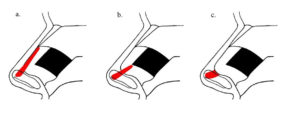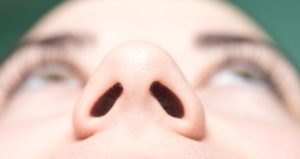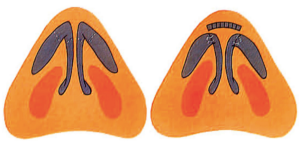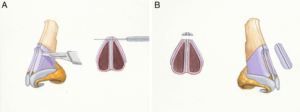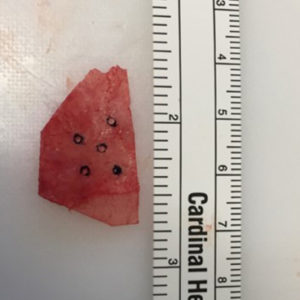1. Anatomy and Structure of the Nasal Tip The nasal architecture is complex, and assessing its external appearance requires critical understanding of the underlying structure. Although the aesthetic goal of rhinoplasty surgeries sets the framework for the task at hand, the inherent anatomy often guides the operative technique1,2. Its composition of skin, fibrofatty soft tissue,… [Read More]
USA
Supporting the Nasal Tip
Intro/Background: Controlling the shape and position of the nasal tip has been described as the single greatest challenge in rhinoplasty. In his textbook, Surgical Anatomy of the Nose, Tardy states it is impossible to sculpt the nasal tip and predict healing without completely understanding the tip support mechanisms of the nose1. Whether performing an open… [Read More]
Cranial Tip Sutures for Tip Refinement
Introduction Nasal tip refinement techniques have continued to evolve over recent decades.1 Reshaping of the tip of the nose must be carefully and precisely performed, as there are numerous aesthetic and functional implications. In this article, we focus on a transformative nasal tip technique called the Cranial Tip Suture, originally described in a 210 patient… [Read More]
Integrated Alar-Lateral Crural Strut Graft: A Novel Technique for Optimizing Tip Dynamics and Sidewall Support
Funding/Financial disclosure: The authors have no financial interest to declare in relation to the content of this article. No external funding was received. Keywords: rhinoplasty, nasal tip, alar rim, lower lateral cartilage, sidewall, lateral crural strut graft, alar rim graft, nasal valve Abstract: The lower lateral cartilages are critical structures for maintaining tip projection, refining… [Read More]
Alar rim grafts
Background The nose resides in a central position on the face and is therefore a major determinant of facial aesthetics and function. For this reason, rhinoplasty is one of the most sought-after aesthetic procedures. Alar rim contour has been shown to have functional and aesthetic implications. In this chapter, we will discuss the relevant anatomy,… [Read More]
Mechanisms of Nasal Tip Deprojection: An Overview
Nasal surgery can be traced back to ancient Egyptian hieroglyphics in 600 B.C. Roe was the first to describe a surgical approach to alteration of the nasal tip in 1887, which was later optimized by Joseph—widely recognized as the father of modern corrective rhinoplasty.1 One of the most challenging elements of rhinoplasty is aesthetic optimization… [Read More]
Use of The Diced Cartilage Glue Graft in Rhinoplasty
Key Points: Synopsis: The over-resected nose or native under-projected nasal dorsum can be augmented with alloplastic or autologous implants, with autologous implants being more preferred due to their safety, biocompatibility and long-term survival. The diced cartilage fascia graft has been the preferred method for dorsal augmentation for several years 1,2, but the diced cartilage glue… [Read More]
Tip Rhinoplasty: Alar Structural Support Techniques
Corresponding Author:Ira Papel, MD The authors have nothing to disclose. Abstract/Synopsis: The facial plastic and reconstructive surgeon must carefully consider both nasal form and function to successfully perform rhinoplasty surgery. This chapter highlights important nasal anatomy, preoperative considerations, and various techniques to improve the structural support of the alae. Structural techniques involving cartilage grafts, suture… [Read More]
The Butterfly graft
The authors have no relevant financial disclosures or conflicts of interests to disclose. No funding or external support was provided for the development of this manuscript. Abstract Nasal airway obstruction is one of the most common complaints seen by otolaryngologists and the septoplasty is one of the most common operations performed. Despite this, many patients… [Read More]
Maximizing the septal graft: use of osteo-cartilaginous septal graft in rhinoplasty
Introduction The nose is a complex structure comprised of a bony-cartilaginous scaffold encased in a soft tissue envelope. These different tissue consistencies work intimately to develop the structure of the nose. In rhinoplasty, establishing form and function of this complex structure often requires grafting to the existing foundation. Conventionally, septorhinoplasty techniques often employ autogenous cartilaginous… [Read More]
- 1
- 2
- 3
- 4
- Next Page »


